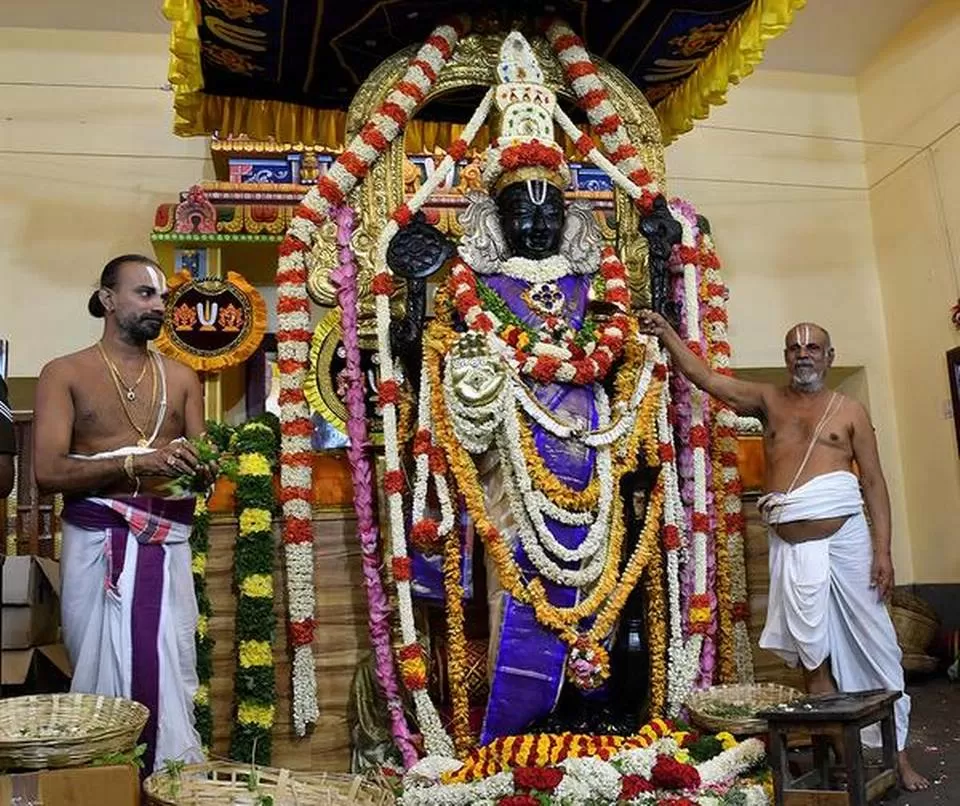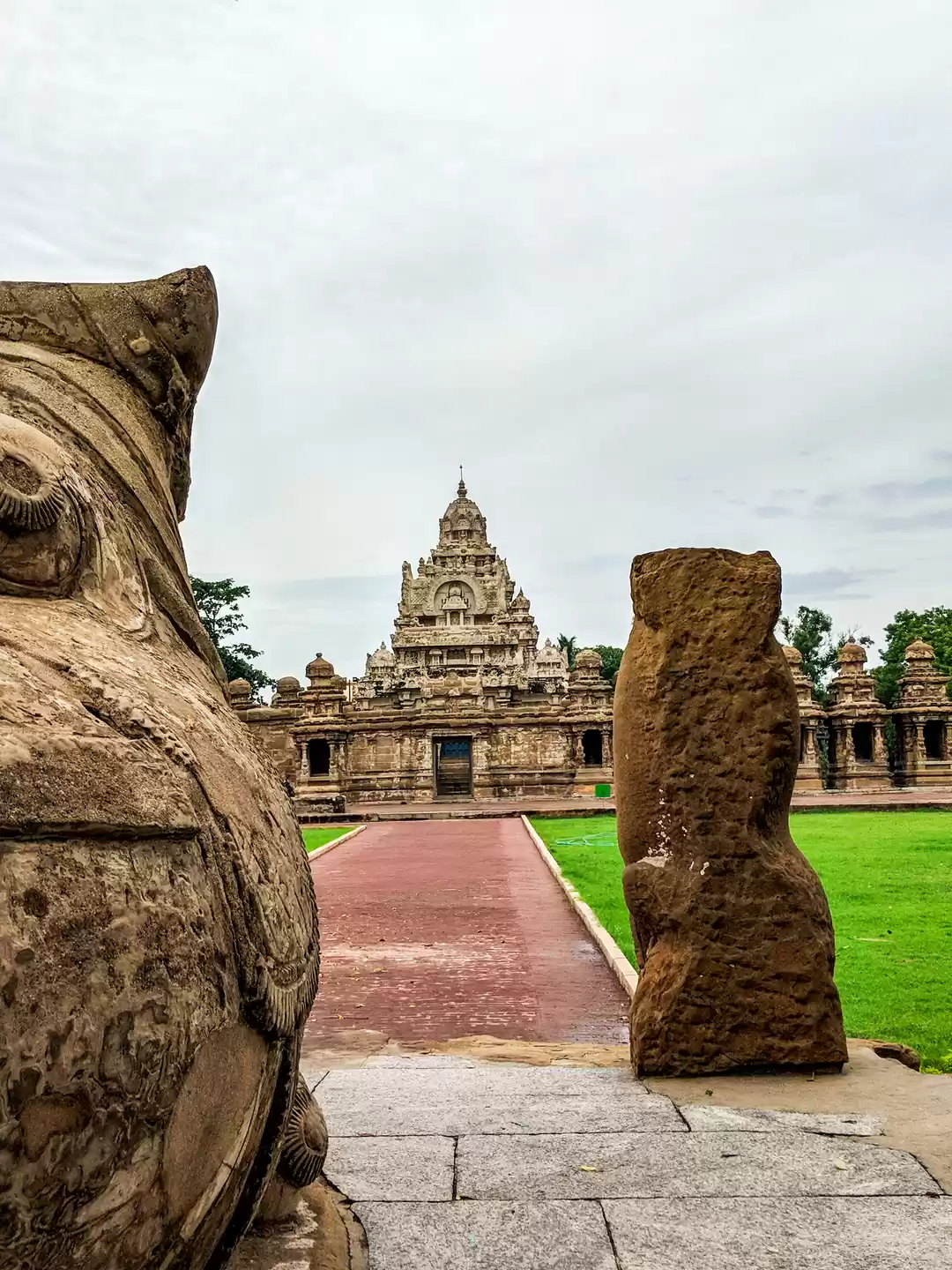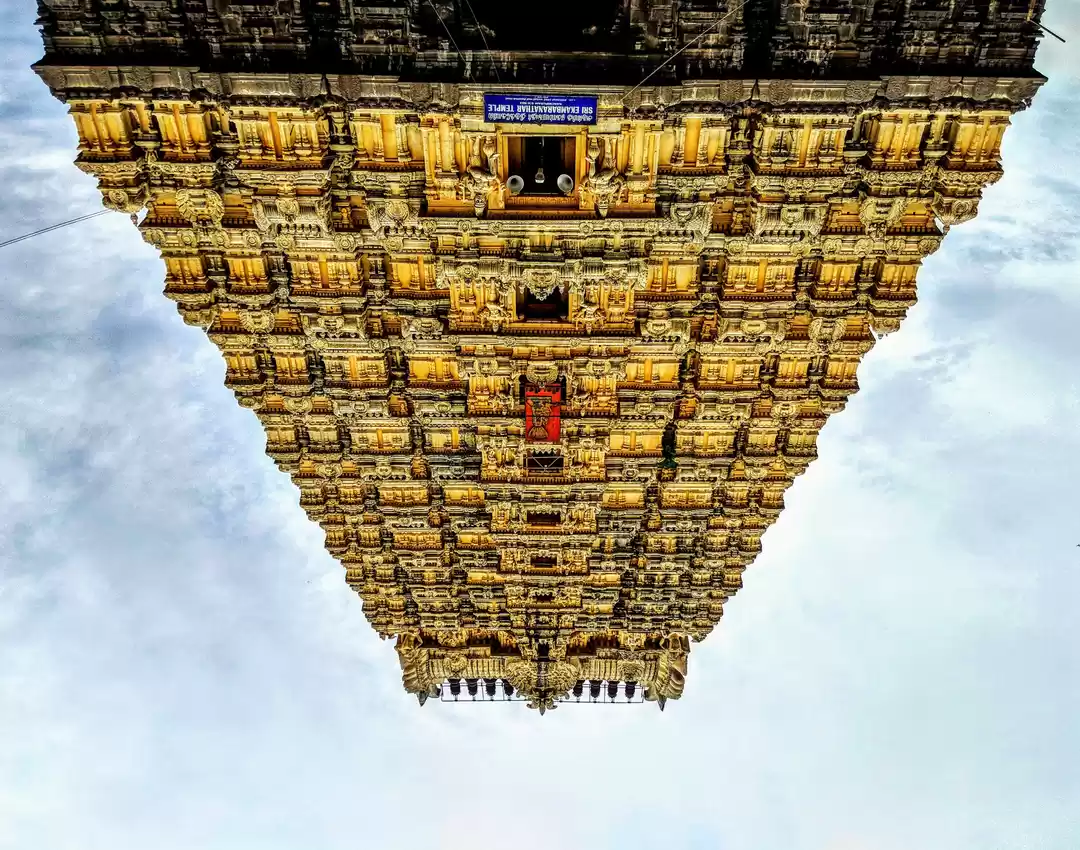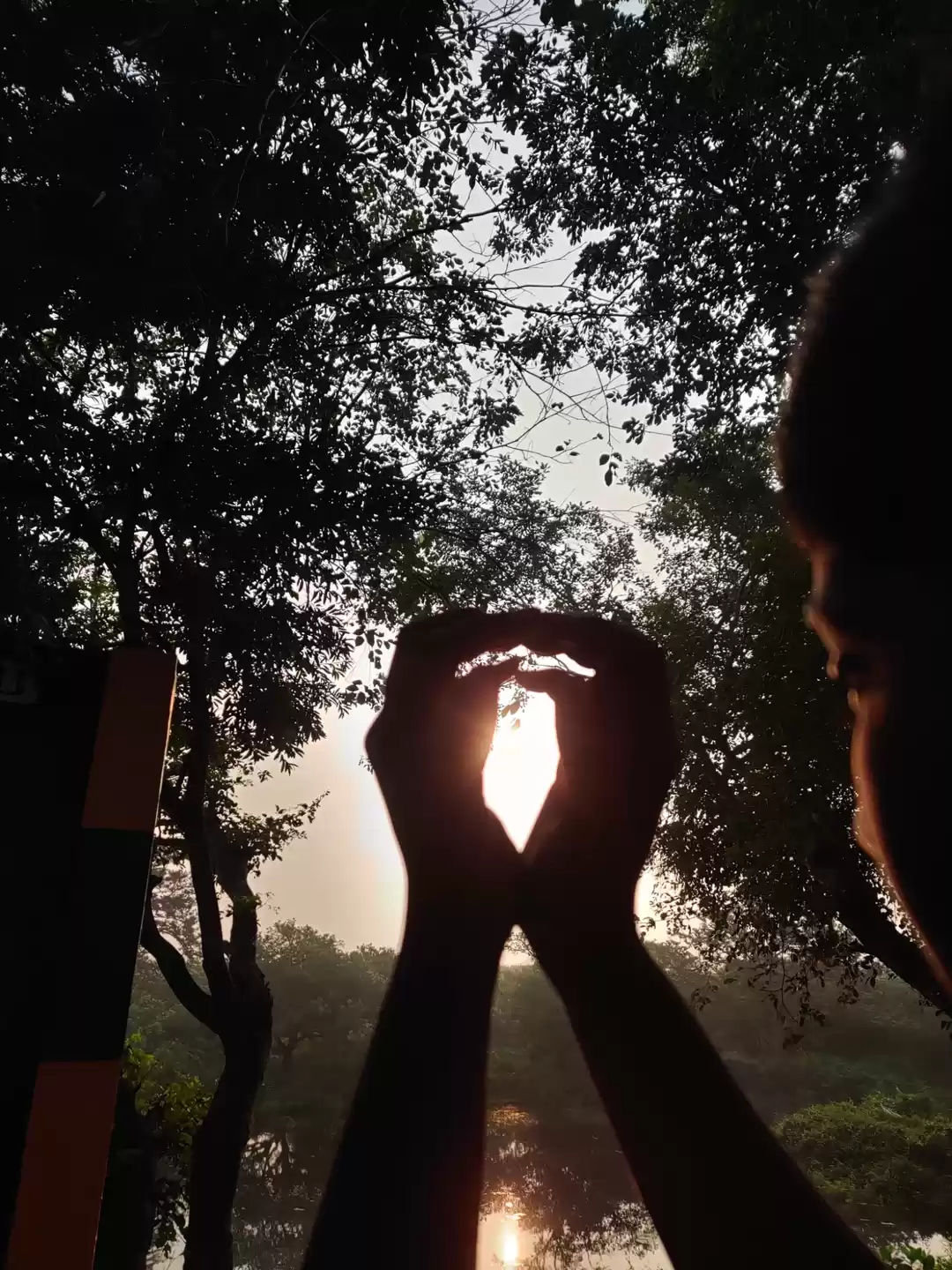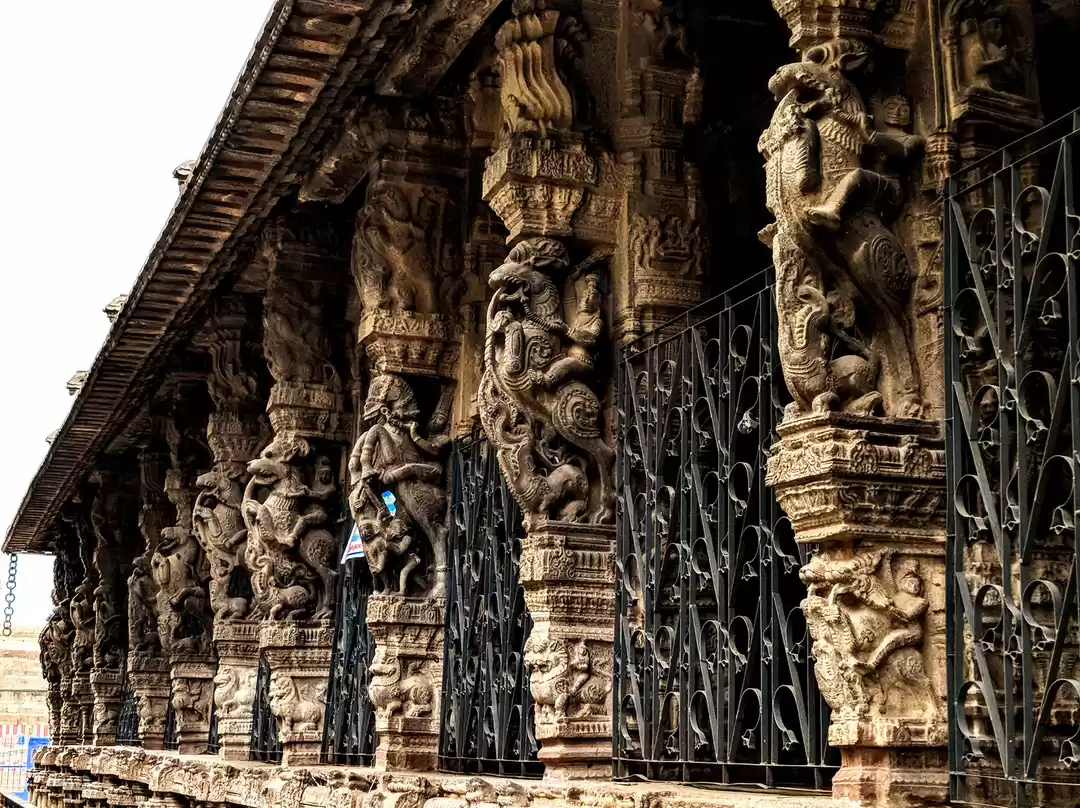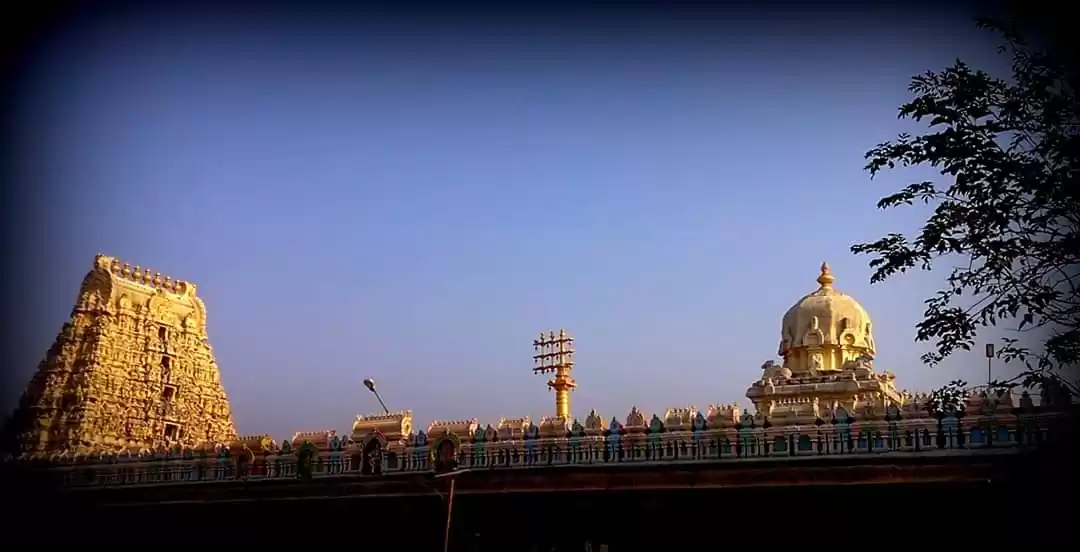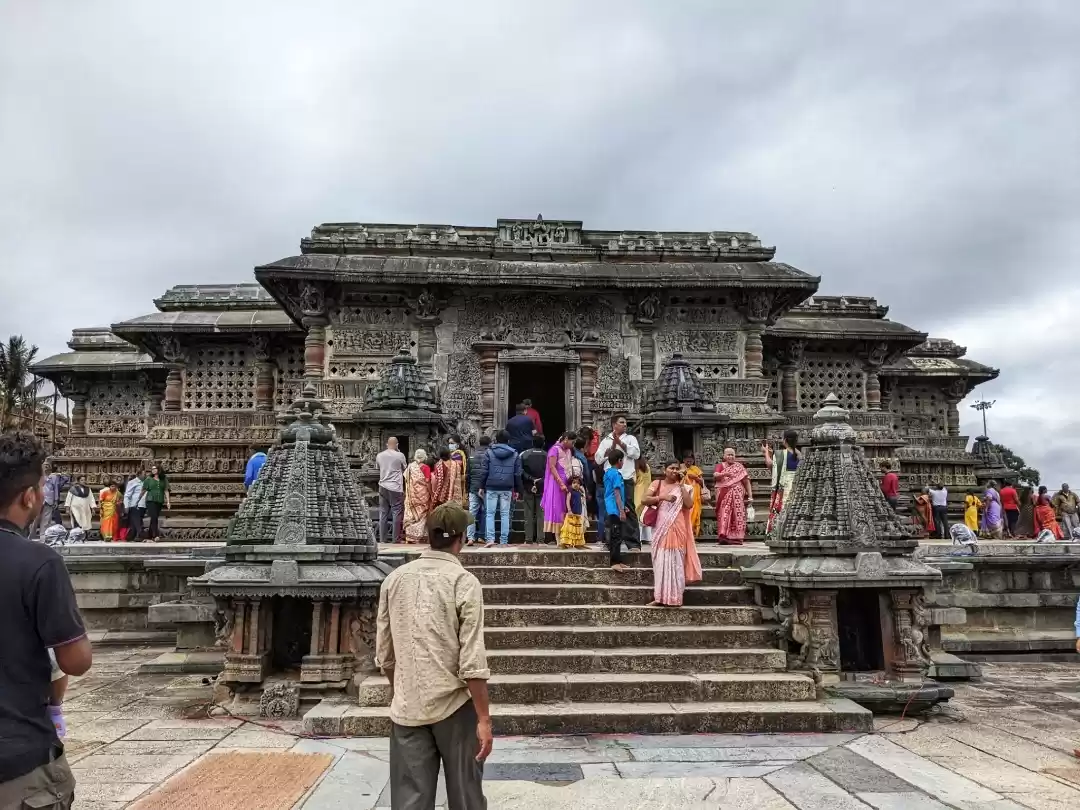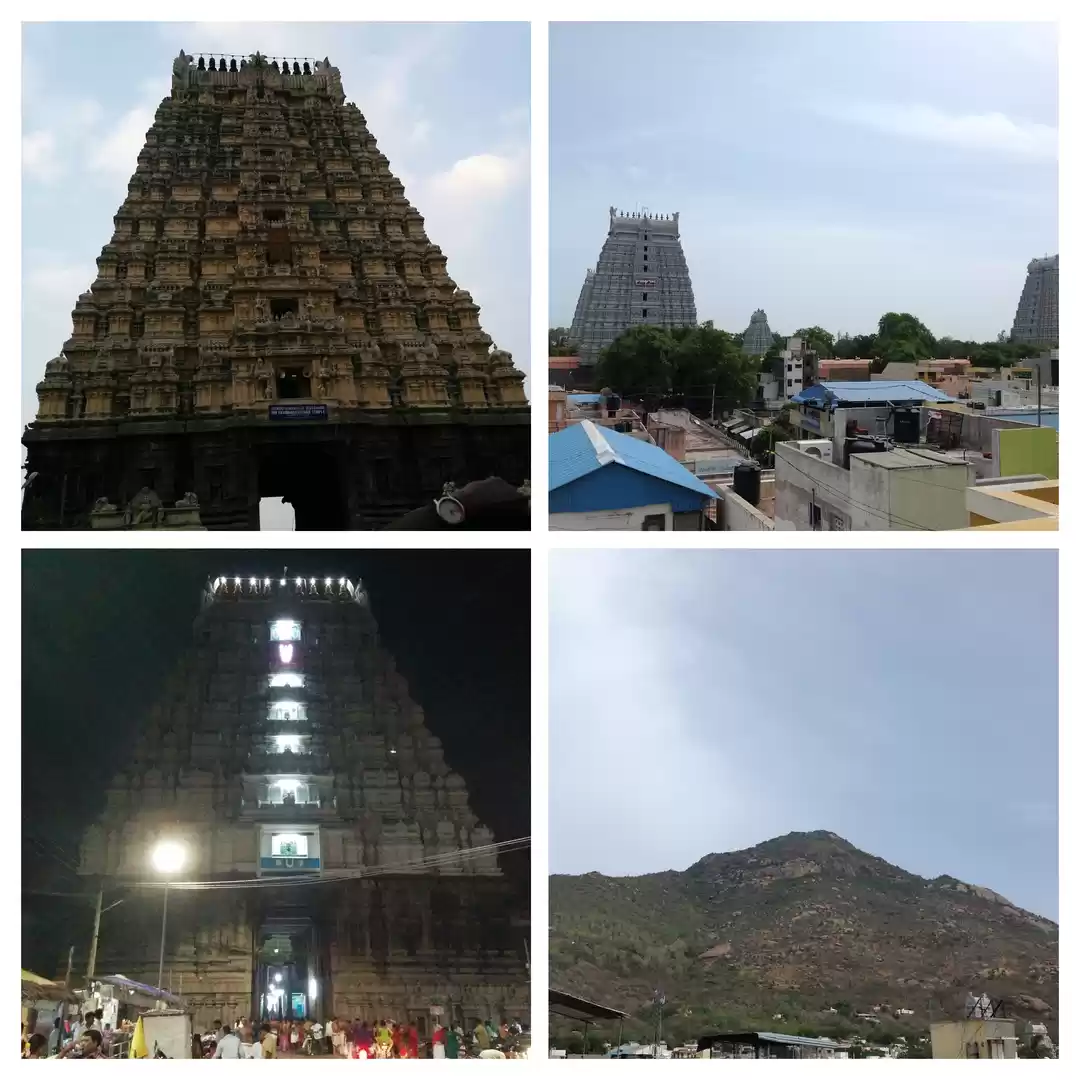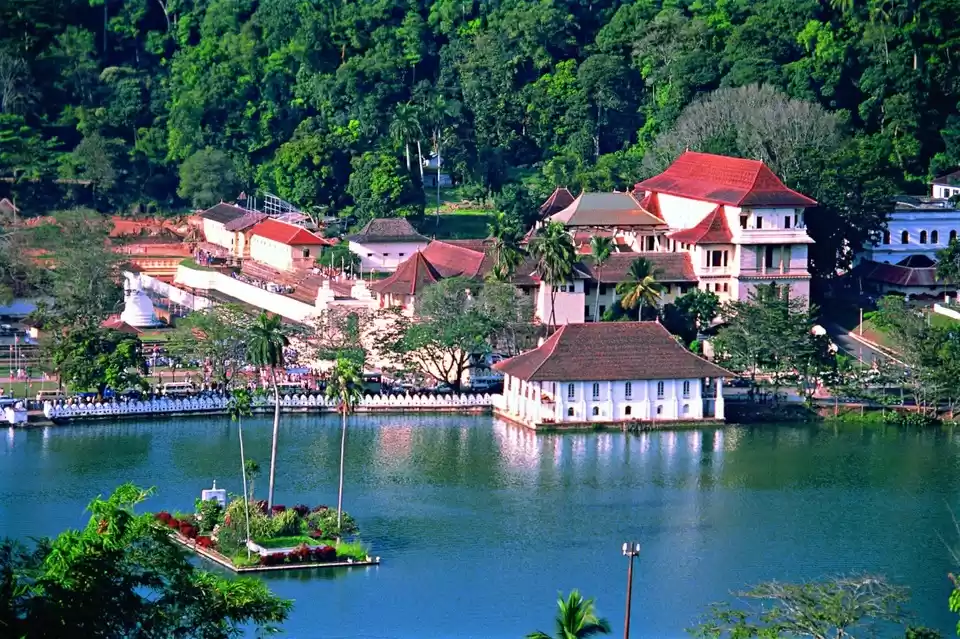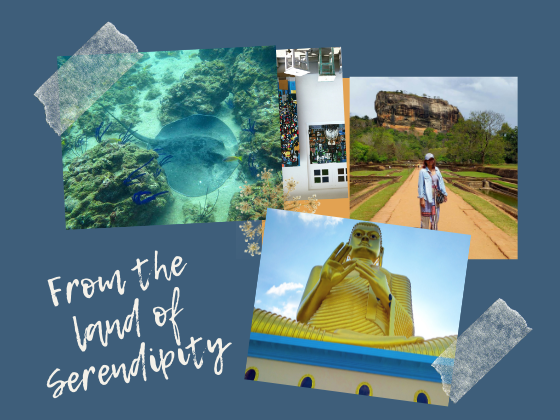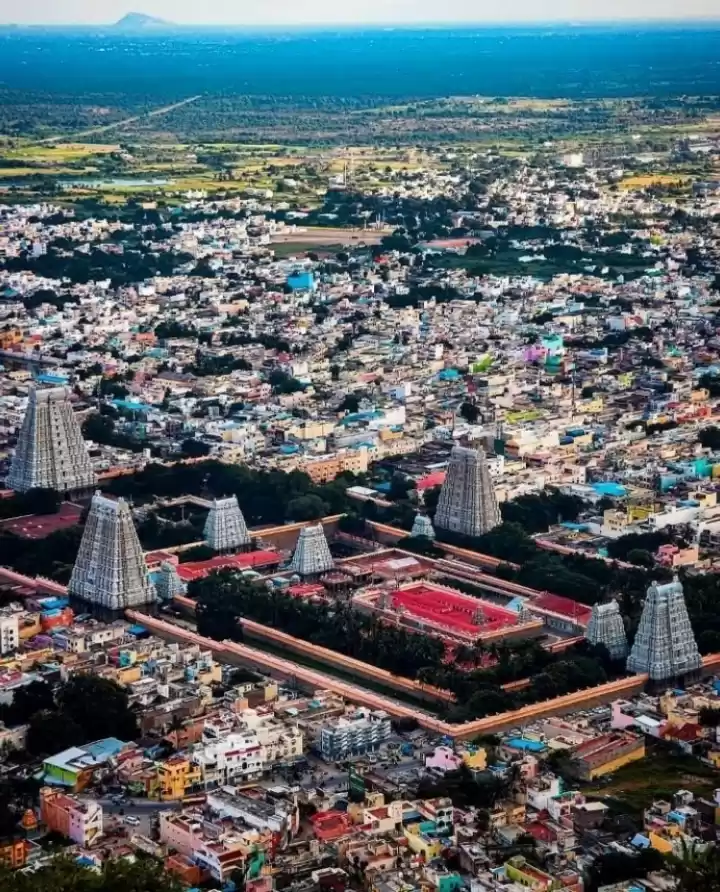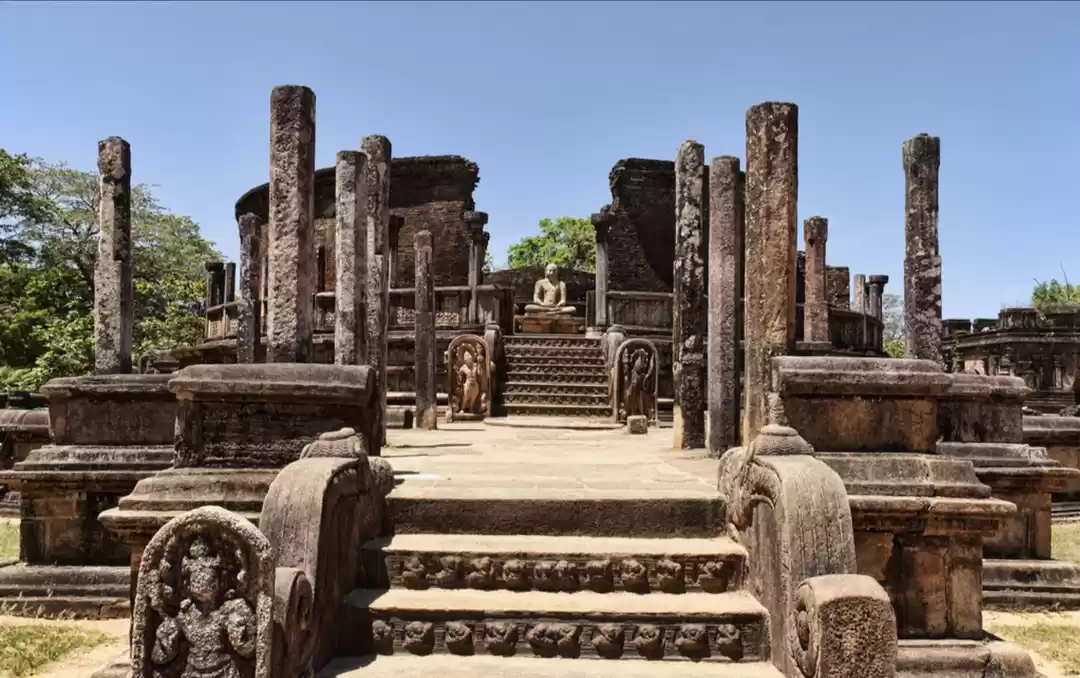Have you ever wondered what it would be like to visit a temple that is older than the Taj Mahal, the Colosseum, and the Great Wall of China? A temple that has witnessed the rise and fall of empires, the birth and death of legends, and the evolution and transformation of cultures? A temple that is dedicated to the supreme mother goddess, who is the source of all creation, wisdom, and power?
If you are looking for such a temple, then you should definitely visit the Kamakshi Amman Temple in Kanchipuram, Tamil Nadu. This temple is one of the 51 Shakti Peethas, where the body parts of Goddess Sati fell after she self-immolated herself in the fire of her father’s yagna. It is believed that the eyes of Sati fell here, and hence the goddess is worshipped as Kamakshi, which means “the one with the beautiful eyes”.
The Kamakshi Amman Temple is not only a place of worship, but also a masterpiece of Dravidian architecture, with intricate carvings, majestic gopurams, and serene ponds. The temple is also a hub of cultural and spiritual activities, with various festivals, services, and aartis taking place throughout the year.
In this article, we will take you on a virtual tour of the Kamakshi Amman Temple, and tell you everything you need to know about its history, significance, architecture, and attractions. We will also give you some practical information on how to reach, when to visit, and what to do in and around the temple. By the end of this article, you will be ready to plan your trip to this divine abode of Goddess Parvati in Kanchipuram.
What to Expect at the Kamakshi Amman Temple
The Kamakshi Amman Temple is spread over an area of 5 acres, and has four entrances, each with a towering gopuram (gateway tower). The main entrance is on the eastern side, and leads to the sanctum sanctorum, where the idol of Goddess Kamakshi is enshrined. The idol is made of gold and silver, and is adorned with jewels and flowers. The goddess is seated in a yogic posture, holding a sugarcane bow, a lotus, a parrot, and a noose in her four hands. She is also surrounded by various other deities, such as Lord Shiva, Lord Vishnu, Lord Brahma, and Lord Ganesha.

The temple complex also has several other shrines, mandapas (halls), and ponds, each with its own significance and beauty. Some of the notable ones are:
The Golden Lotus Pond:
This is a large pond in the center of the temple, where devotees can take a dip and purify themselves before entering the main shrine. The pond has a golden lotus in the middle, which is said to have been created by Goddess Parvati herself. The pond is also home to many fish and turtles, which are considered sacred and fed by the visitors.
The Aadi Peeta Mandapam:
This is a hall where the original idol of Goddess Kamakshi was installed by the sage Durvasa. The idol is now kept in a separate chamber, and is only brought out during special occasions. The hall also has a yantra (a mystical diagram) on the floor, which is believed to have immense power and energy.
The Gayatri Mandapam:
This is a hall where the goddess is worshipped as Gayatri, the embodiment of the Vedas. The hall has a statue of Gayatri with five faces and ten hands, holding various weapons and symbols. The hall also has a shrine of Goddess Saraswati, the goddess of learning and arts.
The Bangaru Kamakshi Mandapam:
This is a hall where a replica of the original idol of Goddess Kamakshi is kept. The replica is made of gold, and is decorated with precious stones and pearls. The hall also has a silver chariot, which is used to carry the idol during processions and festivals.
The temple also has a museum, a library, a marriage hall, and a dining hall, where free meals are served to the devotees every day. The temple is also known for its various festivals, such as the Navratri, the Pongal, the Maha Shivaratri, and the Brahmotsavam, which attract thousands of pilgrims and tourists from all over the world. The temple also offers various services and rituals, such as the archana, the abhishekam, the kumkum archana, and the kalasa puja, which can be performed by the devotees for their well-being and prosperity.
The Kamakshi Amman Temple is a place where you can experience the divine grace and blessings of the mother goddess, who fulfills the desires of her devotees. It is also a place where you can admire the artistic and architectural marvels of the ancient Dravidian civilization, which have stood the test of time and history. It is also a place where you can immerse yourself in the rich and vibrant culture and traditions of Tamil Nadu, which are celebrated with fervor and joy.
Puja Timings
the Kamakshi Amman Temple is open for darshan from 5:30 AM to 12:30 PM and 4:00 PM to 8:30 PM every day.
On Fridays, the temple is open till 9:30 PM and on Purnima or full moon days, till 10:30 PM.
The temple also performs various pujas and rituals throughout the day, such as the archana, the abhishekam, the kumkum archana, and the kalasa puja. The timings and the fees for these pujas may vary depending on the day and the season.
You can check the official website of the temple or ask the temple staff for more details. The temple also celebrates various festivals, such as the Navratri, the Pongal, the Maha Shivaratri, and the Brahmotsavam, when special pujas and processions are held.
How to Reach and Plan Your Trip to the Kamakshi Amman Temple
The Kamakshi Amman Temple is located in Kanchipuram, which is about 75 km from Chennai, the capital city of Tamil Nadu. You can reach Kanchipuram by various modes of transport, such as:
By air:
The nearest airport is the Chennai International Airport, which is well-connected to major cities in India and abroad. From the airport, you can take a taxi, a bus, or a train to Kanchipuram, which will take about 2 hours.
By train:
The nearest railway station is the Kanchipuram Railway Station, which is about 3 km from the temple. You can take a train from Chennai or other nearby cities to Kanchipuram, which will take about an hour. From the station, you can take an auto-rickshaw, a cycle-rickshaw, or a taxi to the temple, which will take about 10 minutes.
By road:
You can also drive to Kanchipuram by taking the NH 48 or NH 32, which are well-maintained and scenic highways. You can also take a bus from Chennai or other nearby cities to Kanchipuram, which will take about 2 hours. The bus stand is about 2 km from the temple, and you can take an auto-rickshaw, a cycle-rickshaw, or a taxi to the temple, which will take about 10 minutes.
The best time to visit the Kamakshi Amman Temple is between October and March, when the weather is pleasant and comfortable. You can also visit the temple during the festival season, when the temple is decorated with lights and flowers, and the atmosphere is festive and lively. However, you should also be prepared for the crowd and the rush, and book your accommodation and transport in advance.
Some of the tips and advice that you should follow while visiting the temple are:
1. Dress modestly and respectfully, as the temple is a sacred place. Avoid wearing shorts, skirts, sleeveless tops, or any revealing clothes. Cover your head and shoulders with a scarf or a shawl, and remove your shoes before entering the temple premises.
2. Follow the rules and regulations of the temple, such as maintaining silence, not taking photos or videos inside the main shrine, not touching the idols or the yantra, and not carrying any leather items or non-vegetarian food inside the temple.
3. Respect the customs and traditions of the temple, such as participating in the aarti, offering flowers and fruits to the goddess, and seeking the blessings of the priests and the temple staff.
4. Be aware of the timings and the fees of the temple, such as the opening and closing hours, the darshan and the puja timings, and the charges for the services and the rituals. You can check the official website of the temple or ask the temple staff for more details.
5. Be careful of the touts and the beggars outside the temple, who may try to scam you or harass you for money. Avoid giving them any attention or any valuables, and report them to the temple authorities or the police if they bother you.
Other Places to Visit in Kanchipuram
Kanchipuram is not only famous for the Kamakshi Amman Temple, but also for many other temples and places that are worth visiting. Kanchipuram is also known as the City of Temples, as it has more than 1000 temples, dating back to the Pallava, the Chola, and the Vijayanagara dynasties. Some of the most popular and beautiful temples in Kanchipuram are:

The Varadharaja Perumal Temple:
This is one of the 108 Divya Desams, or the holy abodes of Lord Vishnu. The temple is dedicated to Lord Varadharaja, or the king of boons, who is worshipped as the presiding deity of Kanchipuram. The temple is famous for its magnificent gopurams, its ornate mandapas, and its exquisite sculptures.
The temple also has a sacred pond, where a wooden idol of Lord Varadharaja is immersed once in 40 years, and is brought out for public viewing.
The temple also has a shrine of Lord Narasimha, the half-man half-lion avatar of Lord Vishnu, who is said to have appeared here to protect his devotee Prahlada. The temple is also known for its ancient manuscripts, paintings, and inscriptions, which reveal the history and culture of Kanchipuram. The temple is a must-visit for anyone who wants to witness the glory and grace of Lord Vishnu in Kanchipuram.
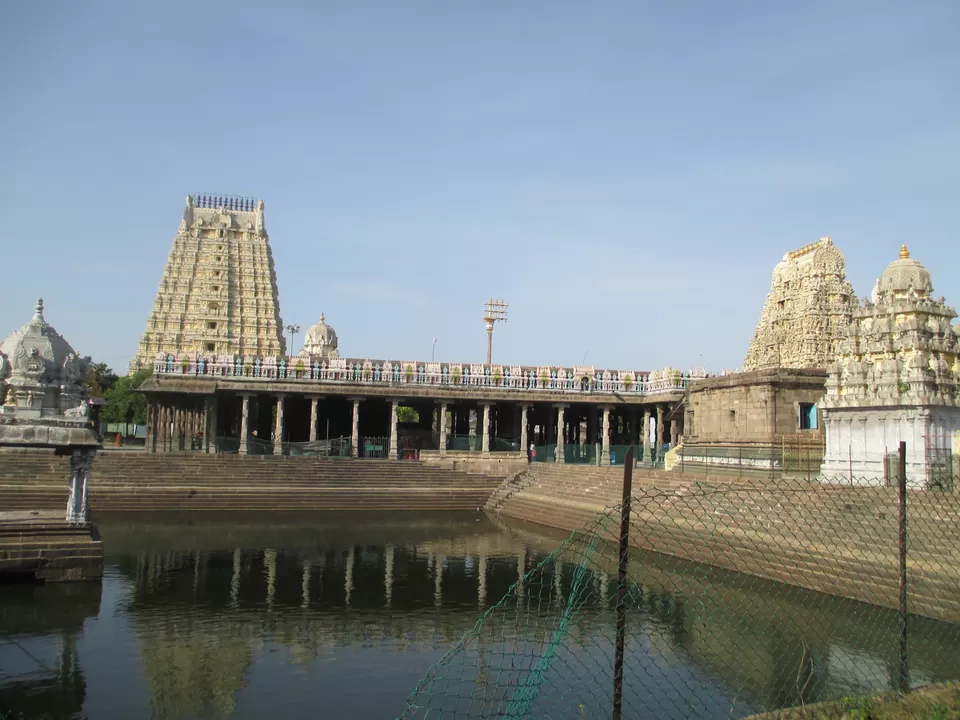
The Ekambareswarar Temple:
This is one of the five Pancha Bootha Sthalas, or the temples of the five elements, where Lord Shiva is worshipped as the element of earth. The temple is dedicated to Lord Ekambareswarar, or the lord of the mango tree, who is said to have manifested here under a mango tree to bless his devotee, Goddess Parvati.
The temple is famous for its massive gopuram, which is the tallest in India, and its thousand-pillared hall, which is adorned with intricate carvings and paintings. The temple also has a sacred mango tree, which is believed to be more than 3500 years old, and bears four different types of mangoes in each season.
The temple also has a shrine of Lord Vishnu, who is worshipped as Nilathingal Thundathan, or the one who gave his skin color to Lord Shiva. The temple is a must-visit for anyone who wants to experience the power and presence of Lord Shiva in Kanchipuram.

The Kailasanathar Temple:
This is the oldest and the most beautiful temple in Kanchipuram, built by the Pallava king Rajasimha in the 8th century. The temple is dedicated to Lord Kailasanathar, or the lord of Mount Kailash, who is another form of Lord Shiva. The temple is famous for its sandstone sculptures, which depict various scenes from Hindu mythology, such as the Dashavatara, the Shiva Parvati wedding, and the Nataraja dance.
The temple also has a pyramidal tower, which is the oldest of its kind in South India, and a circular shrine, which is the only one of its kind in the world. The temple also has a secret passage, which leads to an underground chamber, where the king used to meditate and worship. The temple is a must-visit for anyone who wants to admire the art and architecture of the Pallava dynasty in Kanchipuram.



